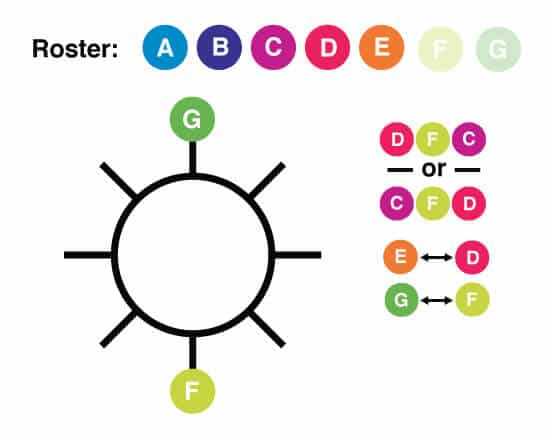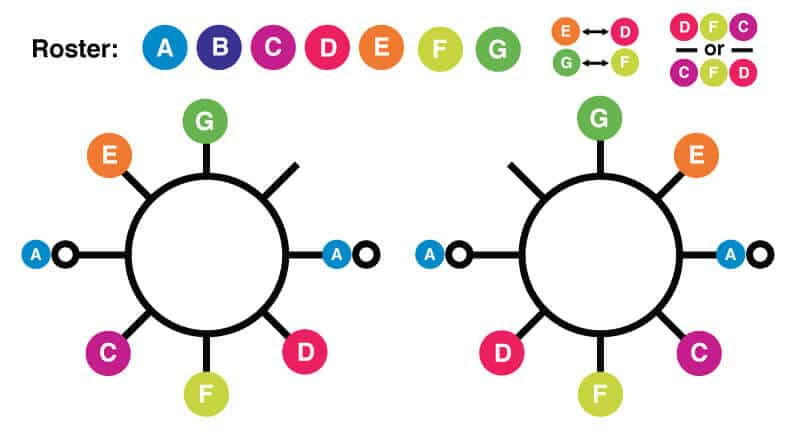Note: Circular Games are rare on the LSAT (there hasn’t been one since 2003). You’re unlikely to get one on test day. So, consider skipping ahead or circling back to this lesson only if you have free time.
In this section, we will describe how to solve games that require you to define the spatial relationships between elements that are arranged in a non-linear fashion (not in a straight line).
Elements may be arranged circularly, like the arrangement of people sitting at a round table or you might be asked to arrange elements according to their positions on a map, by the compass directions, north, south, west, and east.
The best diagram will be one that accurately represents the premise of the game, whether it is the circular arrangement of elements or the arrangement of points on a plane, such as a map. In this section, we will begin by looking at a game requiring the circular arrangement of elements. Through the creation of an effective diagram, we will work through sample questions and conclude with an overall strategy for working through these games.
The best diagram for each game is one that represents the game’s premise. For example, if you are asked to determine the seating arrangement around a table, you will use a circle as the basis of your diagram.
Since we are arranging seats around the table, it can be represented in multiple ways such as single points on the circle or lines representing the individual chairs. A better way is to draw spokes or lines off the circle.
Let’s look at a sample problem.















